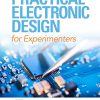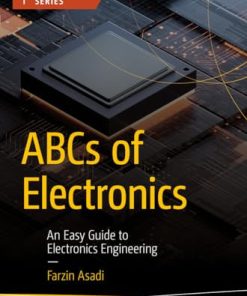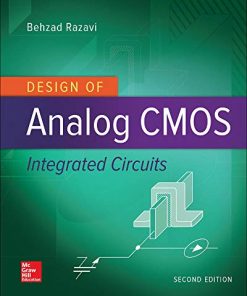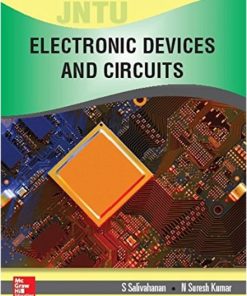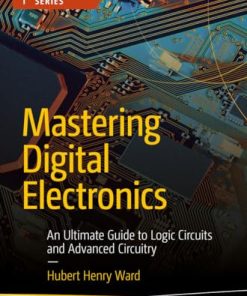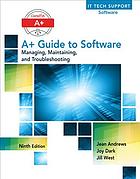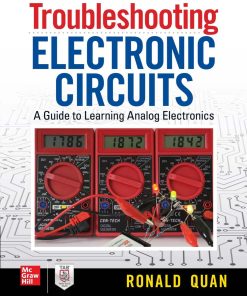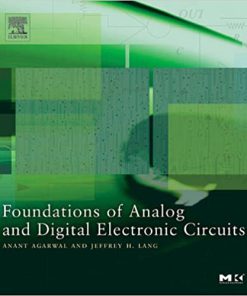(Ebook PDF) Troubleshooting Electronic Circuits: A Guide to Learning Analog Electronics 1st Edition by Ronald Quan 1260143570 9781260143577 full chapters
$50.00 Original price was: $50.00.$25.00Current price is: $25.00.
Troubleshooting Electronic Circuits: A Guide to Learning Analog Electronics 1st Edition by Ronald Quan – Ebook PDF Instant Download/DeliveryISBN: 1260143570, 9781260143577
Full download Troubleshooting Electronic Circuits: A Guide to Learning Analog Electronics 1st Edition after payment.

Product details:
ISBN-10 : 1260143570
ISBN-13 : 9781260143577
Author: Ronald Quan
Publisher’s Note: Products purchased from Third Party sellers are not guaranteed by the publisher for quality, authenticity, or access to any online entitlements included with the product. Debug, Tweak and fine-tune your DIY electronics projects This hands-on guide shows, step by step, how to build, debug, and troubleshoot a wide range of analog electronic circuits. Written by electronics guru Ronald Quan, Troubleshooting Electronic Circuits: A Guide to Learning Analog Circuits clearly explains proper debugging techniques as well as testing and modifying methods. In multiple chapters, poorly-conceived circuits are analyzed and improved. Inside, you will discover how to design or re-design high-quality circuits that are repeatable and manufacturable. Coverage includes: • An introduction to electronics troubleshooting • Breadboards • Power sources, batteries, battery holders, safety issues, and volt meters • Basic electronic components • Diodes, rectifiers, and Zener diodes • Light emitting diodes (LEDs) • Bipolar junction transistors (BJTs) • Troubleshooting discrete circuits (simple transistor amplifiers) • Analog integrated circuits, including amplifiers and voltage regulators • Audio circuits • Troubleshooting analog integrated circuits • Ham radio circuits related to SDR • Trimmer circuits, including the 555 chip and CMOS circuits
Troubleshooting Electronic Circuits: A Guide to Learning Analog Electronics 1st Table of contents:
1 Introduction
Goals of this Book
Quick Notes: Replacing Electrolytic Capacitors and Soldering
Soldering Problems (Cold Solder Connections)
Summary
2 Basic Breadboards
Solderless Breadboards
Quality
Power Buses on Solderless Breadboards . . . Look for Breaks in the Power Bus Lines
And Now Some Words of Caution
Other Breadboards
3 Power Sources: Batteries and Battery Holders, Safety Issues, and Voltmeters
Batteries
Again, a Word of Caution
Expected Battery Capacity
Safety Considerations
Survey of Digital Voltmeters
4 Some Basic Electronic Components
Capacitors
Radial and Axial Electrolytic Capacitors
Measure Twice, Install Once: Erroneously Marked Capacitors
Resistors
Using a DVM to Measure Resistance Values
Measuring Low Resistance Values
5 Diodes, Rectifiers, and Zener Diodes
Diodes and Rectifiers
Forward Voltage Across Anode to Cathode and Reverse Voltage Effects
Testing Diodes and Rectifiers with Digital and Analog Volt Meters
Schottky Diodes
A Brief Look at Zener Diodes
Some General Rules About Diodes
6 Light-Emitting Diodes
The LED’s Light Output
LED “Minimum Turn On” Voltages
Other Types of Green LEDs
Problems with Paralleling Two LEDs with Different Turn-On Voltages
Protecting LEDs from Damage Due to Reverse Voltage Across the Anode and Cathode
Some Keys Points About Light Emitting Diodes
7 Bipolar Junction Transistors
Bipolar Junction Transistors
What Happens When a Transistor Is Damaged
Schematic Symbol of NPN and PNP Transistors
Applying a DC Voltage to the Base of the Transistor to Provide a Constant Current Source
Improved Current Source Circuits
What Happens When Things Go Wrong
Insufficient “Headroom Voltage” for the Transistor
Sometimes Even a Correct Circuit Goes Bad
Summary
8 Troubleshooting Discrete Circuits (Simple Transistor Amplifiers)
Important Practical Transistor Specifications
Simple Transistor Amplifier Circuits
First DC Analysis: Capacitors = Batteries with Self Adjusting Voltages
Second DC Analysis: Take Out the Capacitors to Find the DC Currents and DC Voltages
Finding the AC Signal Gain
Limited Input Amplitude Range
Output Swing Determined by IC and RL || R2
Troubleshooting the One-Transistor Amplifier
Using Negative Feedback to Build “Mass Production” Amplifiers
DC Analysis of Self-Biasing Amplifier
AC Analysis of a Self-Biased Amplifier
Output Resistance Ro’
Another Common Emitter Amplifier
Troubleshooting the Amplifier in Figure 8-31
Maximum Output Voltage Swing
Amplifier’s Emitter AC Grounded via CE
Amplifier’s Emitter Partially AC Grounded via Series RE2 and CE2
Finding an Optimum Bias Point for Maximum Output Swing with Just an Emitter Resistor
Summary
9 Analog Integrated Circuits Including Amplifiers and Voltage Regulators
Operational Amplifiers
Maximum Safe Power Supply Voltage
Minimum Power Supply Voltage
Caution on Providing Supply Voltages
Maximum Output Current
Output Voltage Range
Input Signal Range
Non-Inverting Gain Amplifiers
Inverting Gain Amplifiers
A Short Look at Linear Voltage Regulators
Drop-Out Voltage Summary
Voltage Selections, Packages, Pin Outs and Schematics
Knowing the Pin Out Sequence Is Important
Low–Drop-Out Voltage Regulators
10 Audio Circuits
Preamps and Power Amps
A Basic Difference Amplifier
Dynaco PAT-5 Low-Level Preamp Section and Power Supply
Preamp’s DC Bias Point Estimates
AC Analysis
A High-Fidelity Audio Power Amplifier
DC Biasing Conditions in Figure 10-9
AC Signal Conditions
11 Troubleshooting Analog Integrated Circuits
Circuits That Need Fixing or Redesigning
Photodiode Circuits
Trans-resistance Amplifiers
Summary
Reference Books
12 Some Ham Radio Circuits Related to SDR
Software Defined Radio Circuits
Some Troubleshooting Tips Concerning Figure 12-5 and Figure 12-7
A Common Sample-and-Hold RF Mixer Circuit
A Preferred Implementation with Sample-and-Hold Circuits
A Cool Four-Phase Commutating Mixer
DC Bias Conditions
Testing Circuit with an RF or Function Generator
Improving the “Original Design”
Another View of Op Amp Circuits (Where the Inverting Input Drives a Load)
Suggested System Approach
Crystal Oscillators
Types of Crystals
Low-Frequency Cylindrical Crystals, “Standard” Crystals, and Ceramic Resonators
Standard HC-49 and High-Frequency Cylindrical Crystals
Ceramic Resonators
Be Aware of Overtone Crystals
Gain Bandwidth Product Revisited
Summary
13 Timer, CMOS, and Motor Drive Circuits
Types of 555 Timer Chips
Basic Modes of the 555 Timer Chip and Pin Outs
The 555 Pulse Generator (a.k.a., One-Shot or Monostable Mode)
Troubleshooting the 555 One-Shot Monostable Timer
When You Want to AC Couple a Signal to Trigger a Pulse Output Signal
“Strange” Output Signals Observed via an Oscilloscope
Troubleshooting the 555 Oscillator (a.k.a. Astable Mode)
One More Example on Driving Speakers with the 555
Why Again an Output Coupling Capacitor Is Preferable
Using a 555 to Drive Motors via Pulse-Width Modulation
Summary of Troubleshooting Techniques
14 Troubleshooting Other Circuits, Including Kits and Projects
Component Kits and Test Equipment
LED and Sensor Kits
A Quick Detour with the LM386 Audio Power Amplifier IC
Photonics: A Light Transceiver System
Thermal Sensing Circuit via Thermistor (Temperature-Dependent Resistor)
A Circuit Using an Electrolytic Capacitor Incorrectly
Identifying and Fixing “Bad” Circuit Designs
An Example of the Missing Ground Connection
Ferrite Beads to Tame Parasitic Oscillations
Summary
15 More Tips and Final Thoughts
Deciphering Schematics with Too Many Connection Flags
Troubleshooting with Minimal Test Equipment
Analog Meter Driving Circuits for AC Signals
Troubleshooting an Older Push Pull Audio Amplifier in a 1950s Transistor Radio
Reducing Noise on the Power Supply Bus with Multiple Circuits
Bad Connections from Some IC Sockets
Summary and Final Thoughts
A Choosing Test Equipment
Lab Power Supplies (Adjustable)
Signal Generators
Oscilloscopes
Examples of Display Resolution and Number of Memory Points
Oscilloscope Probes
An Inexpensive Lab
B Online Learning Resources
C Components and Parts Suppliers
General Electronic Components
Transistors, FETs, Diodes, LEDs, Photodiodes, and ICs
Low-Noise Transistors and JFETs, Including Matched Pairs
Passive Components, Resistors, Capacitors, Fixed Valued Inductors, Transformers, Tools, Soldering Irons, Breadboards, and Solder
Kit Parts for Transistors, Diodes, Capacitors, Resistors, LEDs, and More
Ham Radio Parts
Crystals, Inductors, Capacitors, Transistors, RF Transistors, Transformers, and ICs
Oscillator Coils, IF Transformers, and Audio Transformers
Antenna Coils
Variable Capacitors
Science Kits, Cool Things, and Everything Else
People also search for Troubleshooting Electronic Circuits: A Guide to Learning Analog Electronics 1st:
troubleshooting electronic circuits
troubleshooting electronic circuits pdf
troubleshooting electronic circuits ronald quan
troubleshooting electronic circuits book
troubleshooting electronic circuits ronald quan pdf
You may also like…
Technique - Electronics
Technique - Electronics
Engineering - Electrical & Electronic Engineering
Engineering - Electrical & Electronic Engineering
Technique - Electronics
Computers - Hardware
CompTIA A+ guide to software : managing, maintaining, and troubleshooting Ninth Edition Andrews
Engineering - Electrical & Electronic Engineering
Troubleshooting Electronic Circuits: A Guide to Learning Analog Electronics 1st Edition



